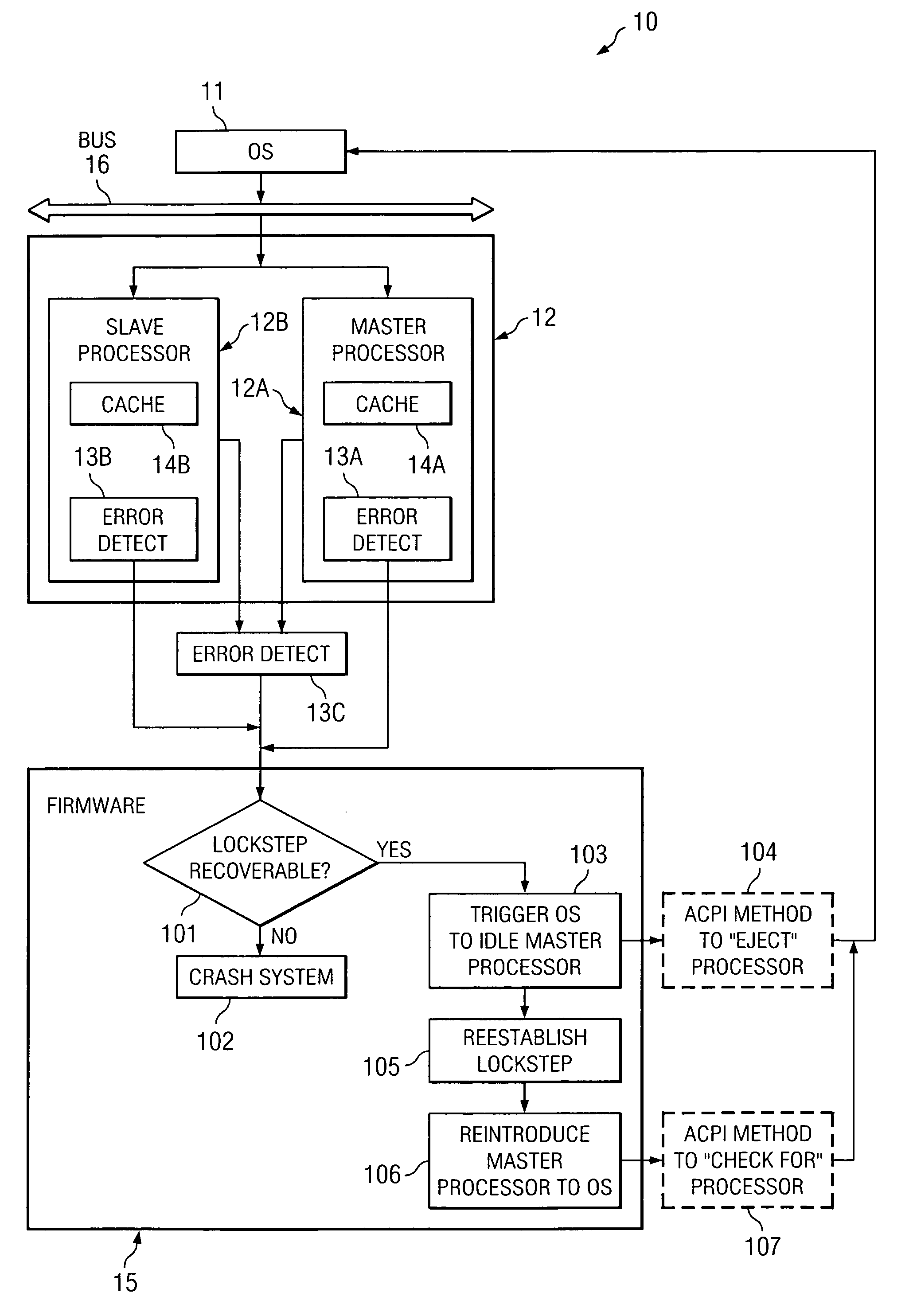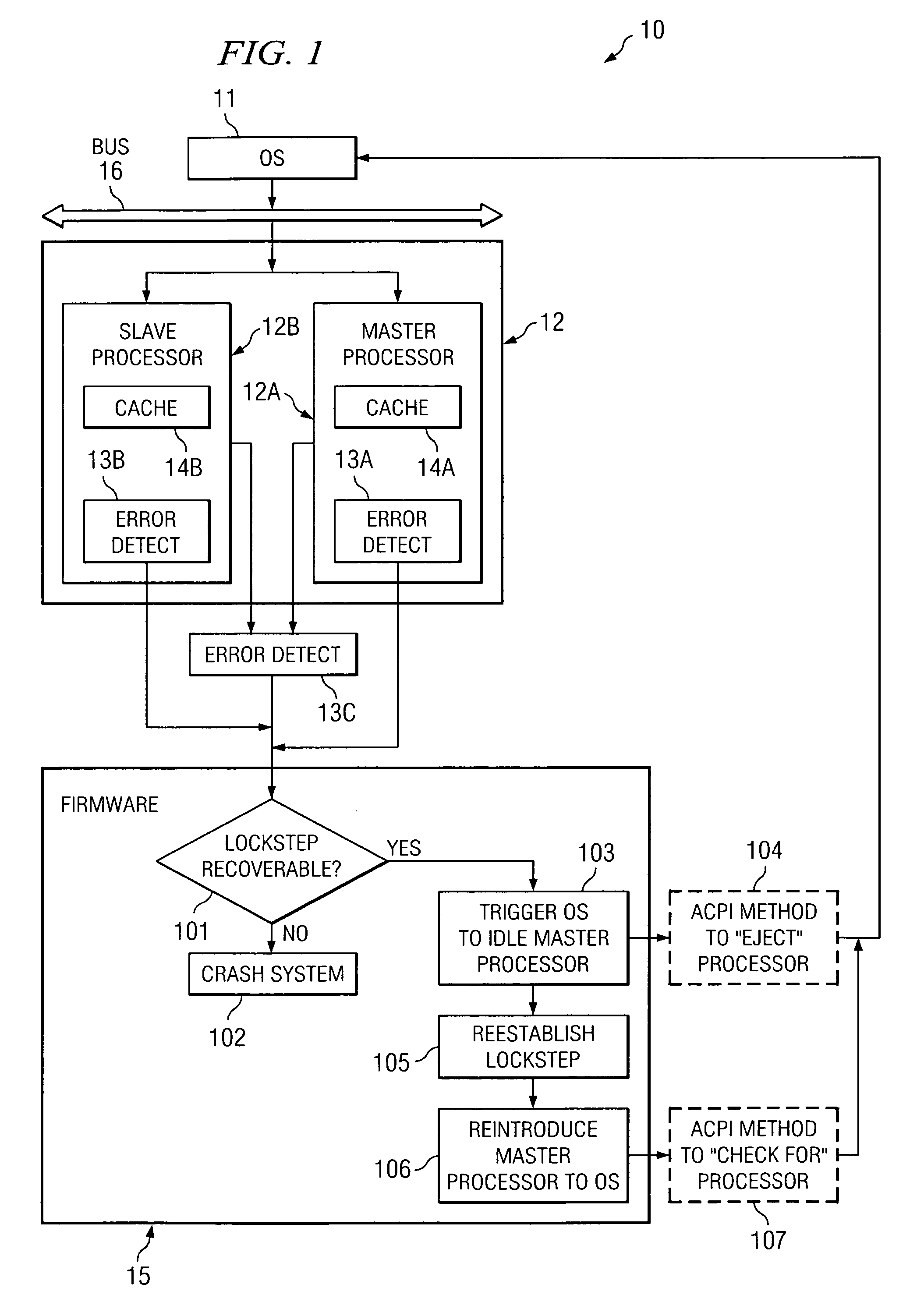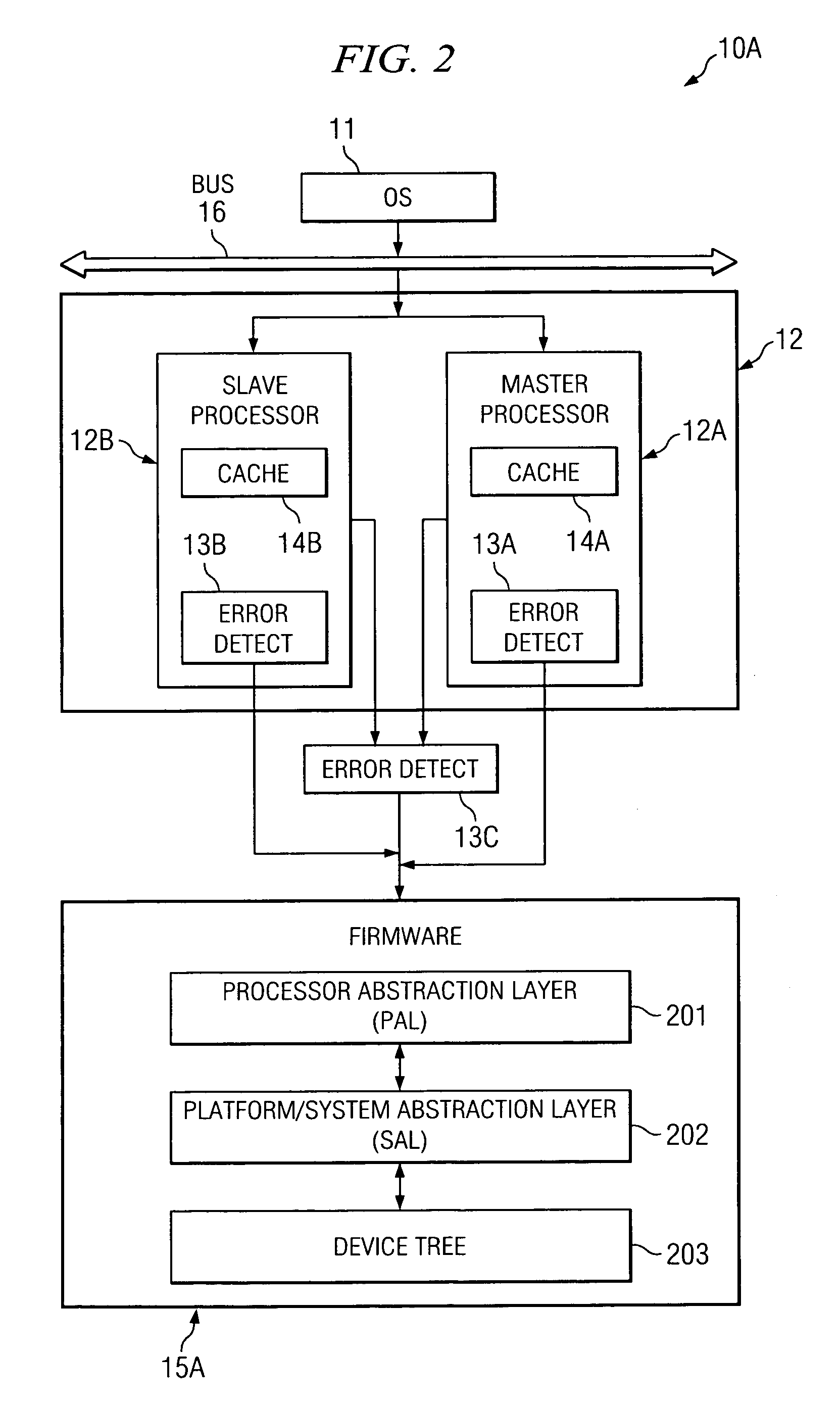System and method for providing firmware recoverable lockstep protection
a technology of firmware and lockstep protection, applied in the field of system and method for providing firmware recoverable lockstep protection, can solve the problems of more difficult to apply parity/ecc mechanisms for sdc detection, silent data corruption (“sdc”) is a difficult problem in the computing industry, and the “trusted” piece of hardware silently gives wrong answers
- Summary
- Abstract
- Description
- Claims
- Application Information
AI Technical Summary
Benefits of technology
Problems solved by technology
Method used
Image
Examples
Embodiment Construction
[0016]Turning to FIG. 1, an example embodiment of a system 10 that uses firmware for controlling recovery from detected loss of lockstep (LOL) is shown. System 10 includes OS 11, as well as master processor 12A and slave processor 12B (collectively referred to as a lockstep processor pair 12). In certain implementations the lockstep processor pair 12 may be implemented on a single silicon chip, which is referred to as a “dual core processor” in which master processor 12A is a first core and slave processor 12B is a second core. Master processor 12A includes cache 14A, and slave processor 12B includes cache 14B. OS 11 and lockstep processor pair 12 are communicatively coupled to bus 16. Typically, master processor 12A and slave processor 12B are coupled to bus 16 via an interface that allows each of such processors to receive the same instructions to process, but such interface only communicates the output of master processor 12A back onto bus 16. The output of slave processor 12B is...
PUM
 Login to View More
Login to View More Abstract
Description
Claims
Application Information
 Login to View More
Login to View More - R&D
- Intellectual Property
- Life Sciences
- Materials
- Tech Scout
- Unparalleled Data Quality
- Higher Quality Content
- 60% Fewer Hallucinations
Browse by: Latest US Patents, China's latest patents, Technical Efficacy Thesaurus, Application Domain, Technology Topic, Popular Technical Reports.
© 2025 PatSnap. All rights reserved.Legal|Privacy policy|Modern Slavery Act Transparency Statement|Sitemap|About US| Contact US: help@patsnap.com



